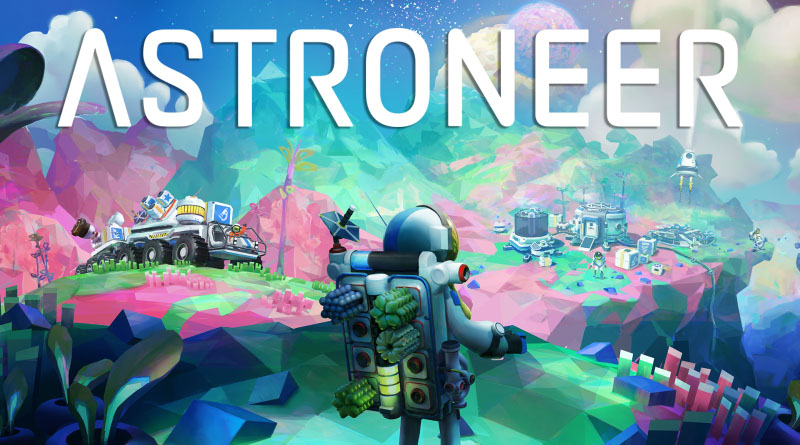
A handful of games have become staples of Steam’s Early Access program, and Astroneer is one such game. As a procedurally generated space exploring sand-box game, does it reach for the stars or is it another launch version of No Man’s Sky? I can happily say it’s much closer to the former.
Astroneer
Publisher: System Era Softworks
Developer: System Era Softworks
Platform: Windows PC (Reviewed), Xbox One
Release Date: December 16th 2018 (Early Access), February 6th 2019 (Windows PC, Xbox One)
Players: 1 – 4
Price: $ 29.99 (Review Copy Received)
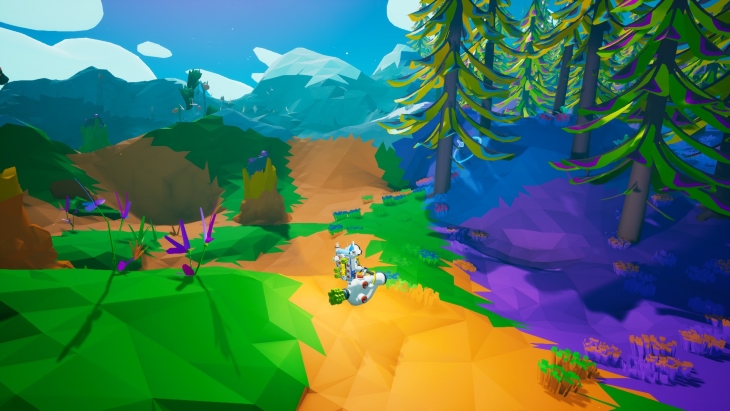
Astroneer has no instructed goals or objectives (aside from achievements), though there is a way to trigger an ending cutscene. The basic tenants are to explore, gather resources, and use those to make machinery.
You can even find machinery from some unexplained failed expeditions. Eventually you can jet-pack your way off to another planet to repeat the process all over again where new resources are available.
To stop you from roaming the planet as you please, your space suit has a limited supply of energy and oxygen. Early on you will need to make tethers to chain back to your base to keep your batteries and lungs full, but eventually you’ll unlock various generators and devices to allow you to explore more freely.
This “dog on a leash” mentality works in the game’s favor. It does feel annoying at first to constantly have a supply of tethers and throwing them down every six steps, but it also creates more elation when you get more freedom; freedom such as vehicles having an infinite supply of oxygen, and plenty of room for a generator to assist it and you.
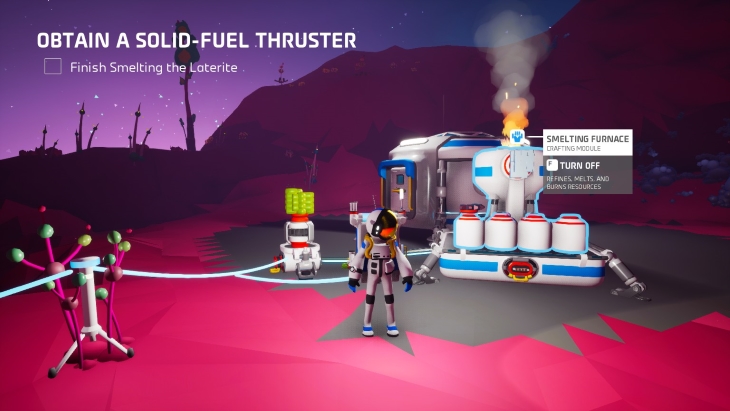
You also come equipped with a vacuum-cleaner style drill called the Terrain Tool. Not only does it suck up soil (and resources), but it can spit it back out to create platforms for easier exploration. It can even be augmented to adjust how quick it works, its area of effect, and given the ability to dig through tougher material.
It is oddly satisfying to see the low-poly environment warp and bend to your will. Though you can create “floating” pieces of terrain, I never made anything that “broke” how things looked. Every hole leads to a cave, rather than breaking a model apart.
The Terrain Tool comes with three slots for augments. Though realistically you cannot carry every augment (seven ignoring direct upgrades), as your backpack only has eight slots. You will want to use most of them to carry other tools and resources, even after you gain vehicles to carry more.

Augments aren’t bad, but 99% of the time I felt it more useful to use Boost and Wide to mine faster, and use the extra slot to store another stack of resources. I am also indifferent to being unable to upgrade the size of your backpack, but a way to keep the augments on hand more easily would make them seem less cumbersome.
Having said that, it does tie into the game’s gradual change in playstyle. Initially you have to plan your next expedition and prepare accordingly. As you unlock more tech, you “earn” the right to be more relaxed about it.
Resources aside, you need to “buy” the ability to make things. While you are technically researching and learning how to make them, Bytes are essentially cash used to unlock blueprints. Bytes can be earned through scanning objects, or putting them in a research chamber for more over time to earn money while you explore.
You can even find dropped research pods out in the world. These are almost like side-quests. Bring them a power-source or a particular resource, and they will open up, providing a research sample worth a lot of bytes.
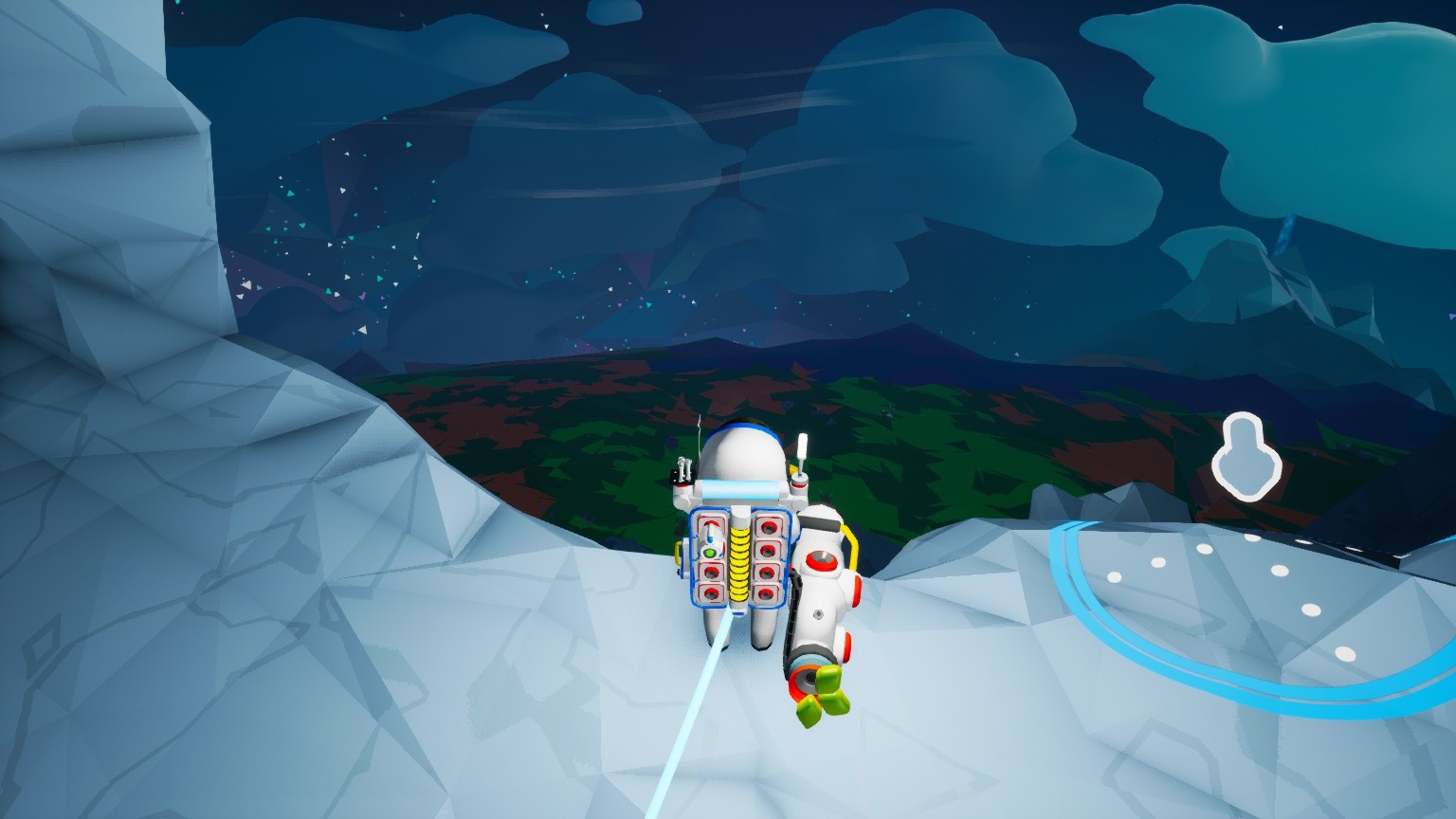
Buying blueprints exposes one of the game’s flaws; some things are not explained fully enough. What a machine does is not explained before you buy it. While most are self-explanatory, you would not know a power cell is consumed after its charge is used, or that certain small machines do not require a platform.
Likewise, while you are told what resources are needed to make a machine when buying its blueprint, there is no easy way to check what else a resource can be used for. For example, quartz can be turned into glass or used in beacons.
In addition, you can find yourself mining up every scrap of a resource, then realize you will not need all of it for quite a while. Then you’ll need to make a lot of storage to keep track of it when you eventually do need it, or dig pits in the ground.
Compare this to the guide in Terraria that lists out all objects a particular resource is used in. You could manually look through every schematic in Astroneer and work this out, but a quick reference would have made things easier. Then again, you may feel this is part of the challenge.

Power is also something you can easily make the wrong assumption about. You are not informed on exactly how many units of energy per second the machine needs. Likewise you’re left clueless on what solar panels, wind turbines, and generators produce outside of external guides and wikis.
Beacons are another point of frustration. While you can change their color (projecting a marker high into the sky), you cannot add text or a logo to help you remember what it marks. Was purple for your Sphalerite mine or your buggy? This is worsened by being unable to make a map.
While you do have a few hotkeys, everything can be clicked on (in the Windows PC version- obviously). Mouse controls are shockingly precise, snapping to objects to make things easier. Though with lots of “context-sensitive” objects close together, it can get tricky to target exactly what you want. Nothing some slight adjustments in your camera and mouse cannot solve however.
As a footnote, the player character has a small “turning circle”, as opposed to the model pivoting on a single point. While this does look more realistic, it gives rare moments where you might risk slipping down a sheer drop.
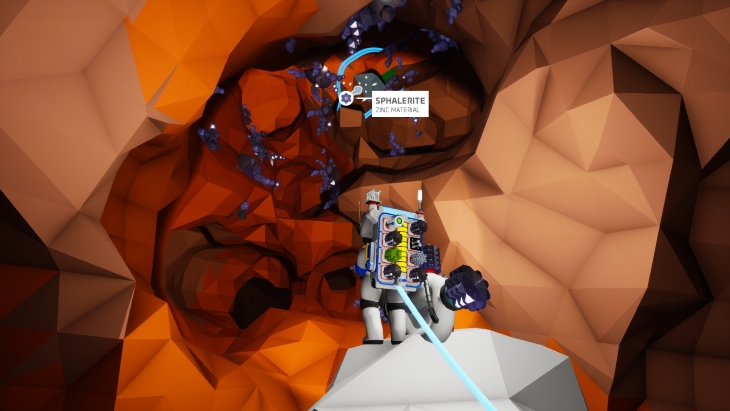
Exploration does change on each world, as you are under different conditions. Rather than “rinse and repeat”, you have access to different resources, along with different viability of solar, wind, and organic power. This changes what you can and cannot build, altering how you can explore.
You may not always be able to build a shuttle that can take machines or resources with you. You essentially get a choice of what machines and resources you bring over or to work from scratch. Overall this prevents the game from being repetitive, if you enjoy the gameplay loop.
There is an interesting mystery around the large dark purple structures you find. Frustratingly, I cannot delve into what they are without spoilers. Not because of a plot, but realizing what they do is a delight. Doing so again on other planets is largely the same, but more difficult.
This drip feed of “now I can do more” is probably the reason I was shocked I had played for four hours straight in my first session, despite thinking I was making little progress. Resources are plentiful on the first planet, but those first few hours can easily drive you away if you cannot find something beyond Compound and Resin.
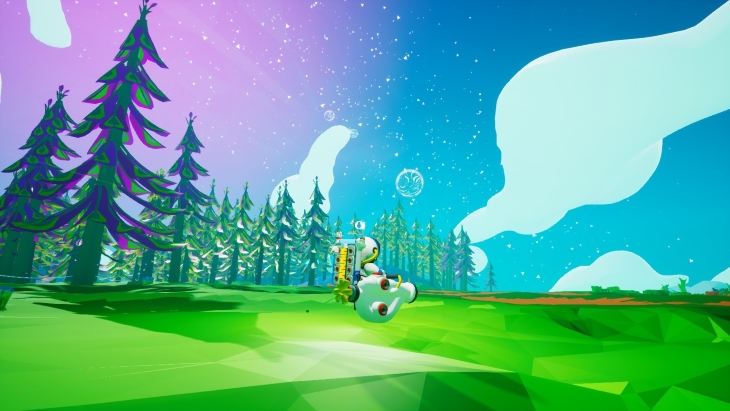
Gameplay is divisive. If you do not enjoy the first few hours, then no matter how much you build and unlock, you are not going to enjoy the rest. Gameplay here is something relaxing rather than exciting, aside from finding or building something new.
Likewise in multiplayer, this is not the sort of game you will be able to tell stories about or create narratives based on how your friends play. Exploring a world together can be fun, but your only story may be “Ryan fell down the hole again.”
Even the most vicious of “enemies” are plants that attack you from range like a turret. Your only chance of death is becoming complacent. Falling down a steep drop, standing next to an exploding plant, or forgetting you have no oxygen supply. Storms and other hazards have been removed in the final build, but future updates will bring them back.
While similar sandbox games like Terraria and Minecraft offer a wealth of options to customize your buildings and environment, Astroneer is rather sparse. Other than changing the style and color of your space suit, there is no customization in how your base looks other than where you put machines.
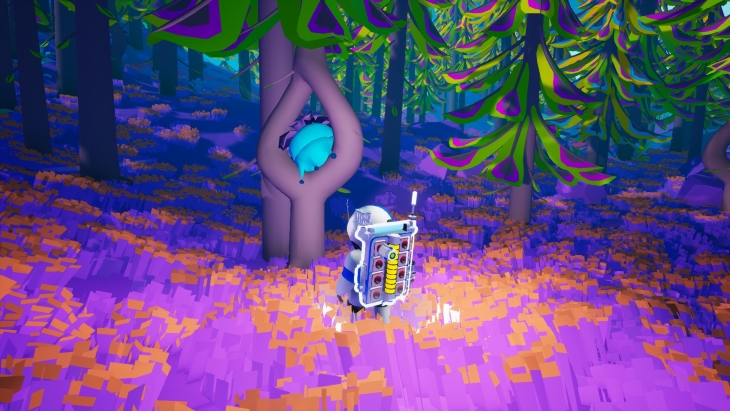
While you can modify and recolor terrain, it is hardly an accurate tool to make complex structures with. Machine platforms can be attached to walls and ceilings in addition to floors, so theoretically you can make a cave or sub-terrainian base.
A “Creative Update” is planned, and I hope this will introduce a little personal flare to go with the promised creative mode. Though as of right now, the game does not need it to be enjoyable.
I kept thinking Astroneer should be boring. RNG could have made certain resources impossible to find, but I still did. The lack of enemies could have made exploration dull, but I kept thinking “how do I go further?” The exploration could have been the same on each planet, but I had to adjust my tactics based on terrain and what I had on hand.
I’m glad my fears from the first few hours were betrayed. Not to mention several issues I had should be solved in planned future updates. It was “comfy,” sitting in the same sort of vein as truck or train simulators without the minutia. Although you may want to make notes or use a guide, depending on what you deem necessary or cheating.
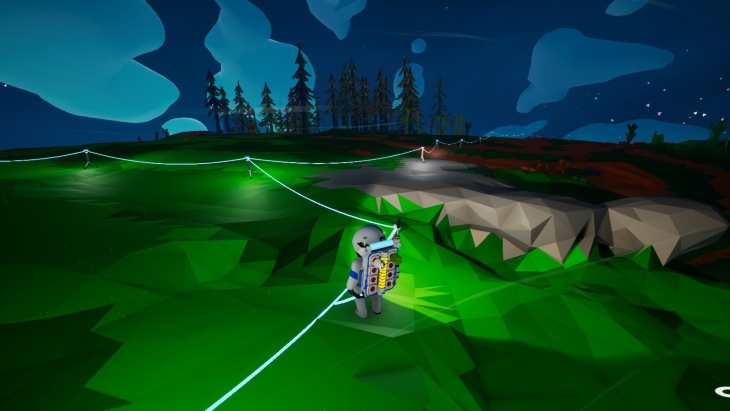
To be blunt, the graphics are rather basic. Textures are either shiny or matte and devoid of any depth and, well, texture. You can literally see the polygons that make up the ground. I feel this is an art-style choice, rather than covering up for any lack of skill. Even then, I did notice pop-in while landing on a planet, and even while running across the map.
I say this because things are well designed. The machines you build have smooth “Apple-esque” designs, but you can also see smaller details like a cog moving the printer head back and forth.
The resources are also very interesting looking. Each “stack” is made up of smaller segments which build up as you collect them. While they do use re-colors, you can tell at a glance what material everything is supposed to be. Even if you can’t, the name hovers above it when you mouse over it.
Environmental assets are also look great. Be it a crashed satellite, strange plants or seeing another planet fly over your head in the night sky; it all looks alien, wild and untamed. It is effective, despite how simple it is.
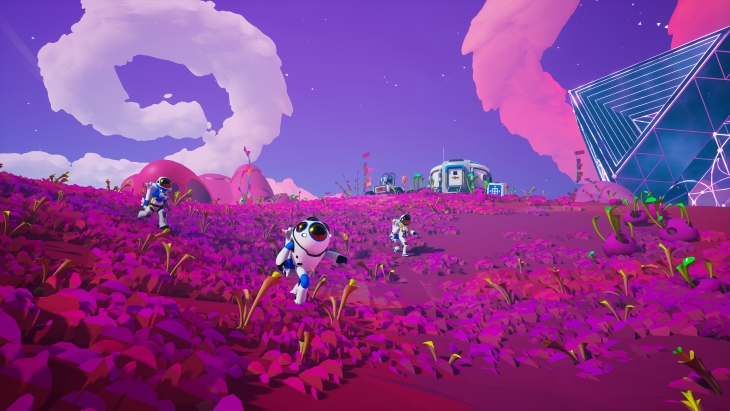
I do have a couple minor gripes. While the worlds all look different and have different biomes, the lack of visual decoration can make it hard to navigate. One purple forest on Sylva looks like another. If not for mountains and objects you interact with or place yourself, you would get lost. Even in a randomly generated world, landmarks would help guide and encourage the player’s exploration.
Another is that, on occasion, small objects can be found floating. While nothing I planted at my base acted abnormally, I found strings of tethers an inch off the ground (despite not disturbing the soil underneath), and entering a new area with plants sitting in mid-air on a cliff-side.
Sound and music are enough, and are a fine case of doing the job well enough to not draw ire or attention. That being said, the satisfying ding for a completed resource stack never gets old (and a different one for each type).
Not to mention the soundtrack is dynamic, changing based on the biome you are in on each world. To cap it off, it is also quite relaxing and even a little foreboding or isolating on some worlds. It is not as though the music is award winning, but I think it is going to go underappreciated because it’s not pulse-pounding.
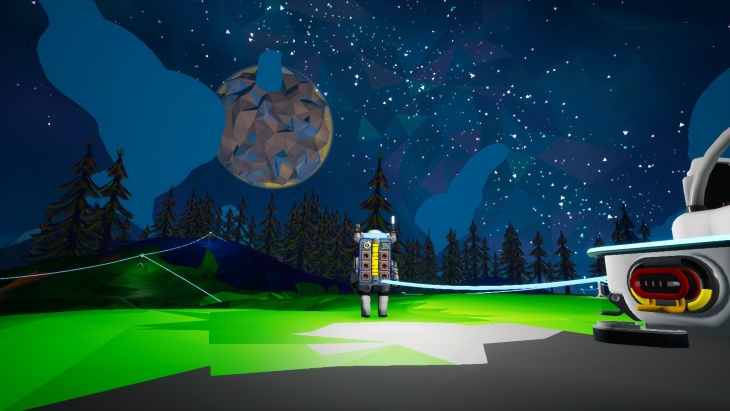
Astroneer is going to be the sort of game you end up hating in a few minutes, or something you are going to put a great deal of time into.
While its sandbox-peers do a few things I would like to see here, it carves out its own style and has potential to develop into something that will make it stand along-side them as equals. Oh, and it is better than No Man’s Sky.
Astroneer was reviewed on Windows PC using a review copy provided by System Era Softworks. You can find additional information about Niche Gamer’s review/ethics policy here.